
Sutton Cheney is a village and former civil parish, now in the parish of Dadlington and Sutton Cheney, in the borough of Hinckley and Bosworth, in the county of Leicestershire, England, near the county border with Warwickshire. In addition to the village of Sutton Cheney itself, the civil parish also contains the villages of Dadlington and Shenton, a number of farms, and the location of the Battle of Bosworth. Its closest large towns are Nuneaton and Hinckley. Its closest market town is Market Bosworth.

Old is a village and civil parish in West Northamptonshire, England. At the time of the 2001 census, the parish's population was 308 people, and the population increased to 490 at the 2011 Census.
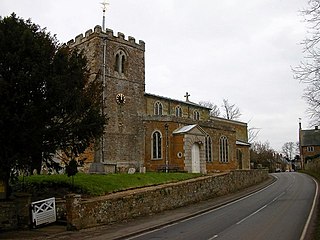
Lamport is a village and civil parish in West Northamptonshire, England. The village is on the A508, about 8 miles (13 km) south of Market Harborough and 8 miles (13 km) north of Northampton. Nearby is Lamport Hall. At the time of the 2001 census, the parish's population was 207 people, including Hanging Houghton and increasing to 225 at the 2011 Census.
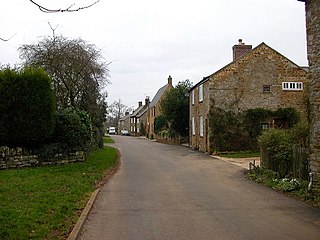
Hanging Houghton is a small village and former civil parish, now in the parish of Lamport, in the West Northamptonshire district, in the ceremonial county of Northamptonshire, England. It is on the A508 road between Brixworth and Lamport. In 1931 the parish had a population of 84.

Sempringham is a village in the civil parish of Pointon and Sempringham, in the South Kesteven district of Lincolnshire, England. It is situated 2 miles (3.2 km) south from the A52 road, 12 miles (19 km) east from Grantham and 8 miles (13 km) north from Bourne. The hamlet is on the western edge of the Lincolnshire Fens, the closest village being Billingborough, 0.5 miles (0.80 km) to the north on the B1177 road. Sempringham is noted as the home of Gilbert of Sempringham, the son of the lord of the manor. Gilbert is the only English Saint to have founded a monastic order, the Gilbertines. In 1921 the parish had a population of 112. On 1 April 1931 the parish was abolished to form "Pointon and Sempringham".

Weston Favell is an area and former civil parish near the eastern end of Northampton, now in the parish of Northampton, in the West Northamptonshire district, in the ceremonial county of Northamptonshire, England.

Long Clawson is a village and former civil parish, now included in that of Clawson, Hose and Harby, in the Melton district and the county of Leicestershire, England. Being in the Vale of Belvoir, the village is enclosed by farmland with rich soil ideal for pasture. Milk from local farms is used for Stilton cheese, of which the Long Clawson dairy is one of the largest producers. In 1931 the civil parish had a population of 664.
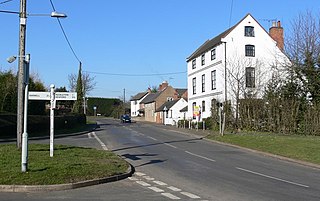
Kirkby Mallory is a village and former civil parish, now in the parish of Kirkby Mallory, Peckleton and Stapleton, in the Hinckley and Bosworth district, in the county of Leicestershire, England. In 1931 the parish had a population of 231.

Peckleton is a small village and former civil parish, now in the parish of Kirkby Mallory, Peckleton and Stapleton, in the Hinckley and Bosworth district of Leicestershire, England. The villages of Kirkby Mallory and Stapleton also form part of the parish. Thus, according to the 2001 census, the parish had a population of 1,077, falling slightly to 1,067 at the 2011 census. Due east of the village is Peckleton Common, adjacent to The Glebe Fisheries, an angling centre of excellence completed in 1996. The local church, St Mary Magdalene, is located just south of the village centre.

Leigh Delamere is a small village in the civil parish of Grittleton in the English county of Wiltshire, about 4 miles (6 km) northwest of the town of Chippenham. The M4 motorway passes some 250 metres to the south, and the motorway's Leigh Delamere services lie to the east of the village.

Sibson is a village and former civil parish, now in the parish of Sheepy, in the Hinckley and Bosworth district, in western Leicestershire, England, close to the border with North Warwickshire. It is situated approximately midway between the towns of Hinckley and Measham, and slightly northeast of Atherstone. In 1931 the parish had a population of 264.

Orton on the Hill is a village and former civil parish, now in the parish of Twycross, in the Hinckley and Bosworth district of Leicestershire, England. Orton adjoins Morebarne, Sheepy and Newhouse Grange on the south, Appleby and Austrey to the east.

Dallington is an area and former civil parish about 1.5 miles (2.4 km) northwest of the centre of Northampton, now in the parish of Northampton, in the West Northamptonshire district, in the ceremonial county of Northamptonshire, England. Dallington was formerly a separate village. At the 2011 census the population was listed in the Spencer ward of Northampton Council.

Ashby Folville is a village and former civil parish, now in the parish of Gaddesby, in the Melton district of Leicestershire, England, south west of Melton Mowbray. In 1931 the parish had a population of 123.
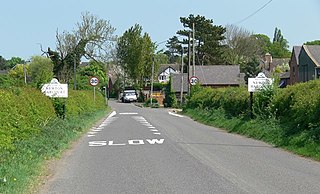
Newton Harcourt is a village and former civil parish, now in the parish of Wistow, in the Harborough district, in the English county of Leicestershire, and lies 7 miles south-east of the city of Leicester on the northern ridge of the River Sence valley. In 1931 the parish had a population of 142.

East Carlton is a village and civil parish in the county of Northamptonshire, on the southern ridge overlooking the Welland valley to the north and covers 1,645 acres (666 ha) on a long strip of land. It is 2 miles (3.2 km) west of the town of Corby and is administered as part of North Northamptonshire but was previously in the Corby borough until 2021. At the time of the 2001 census, the parish's population was 270, reducing to 259 at the 2011 census. East Carlton is one of the Thankful Villages that suffered no fatalities during World War I. Although in Northamptonshire, the village is in the Leicestershire LE16 postcode area.
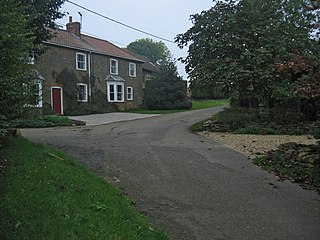
Chadwell is a small village in the district of Melton, which is approximately 4 miles (6.4 km) northeast of Melton Mowbray in Leicestershire, and is part of the civil parish of Scalford, which also includes the neighbouring hamlet of Wycomb. Until 1 April 1936 it was in the parish of Wycomb and Chadwell. The village name means 'spring/stream which is cold'. Chadwell is half a mile east of Wycomb, and they share the Church of St. Mary in the same ecclesiastical parish. The Church of St Mary is a Grade II* listed building.

Fyfield is a village and former civil parish, now in the parish of Fyfield and Tubney, in the Vale of White Horse district, in the county of Oxfordshire, England. It is about 4+1⁄2 miles (7 km) west of Abingdon-on-Thames. It was part of Berkshire until the 1974 boundary changes transferred it to Oxfordshire. The village used to be on the main A420 road between Oxford and Faringdon, but a bypass now carries the main road just south of the village. In 1951 the parish had a population of 280. On 1 April 1952 the parish was abolished and merged with Tubney to form "Fyfield and Tubney".

Foston is a deserted medieval village and former civil parish, now in the parish of Kilby, in the Blaby district of Leicestershire and lies approximately 6.1 miles (9.8 km) south of the city of Leicester, England. The settlement name Foston means "Fotr's farm/settlement": "Fotr" is an Old Norse personal name, and "tūn" in Old English means an enclosure, farmstead, village or estate. In 1931 the parish of Foston had a population of 36. On 1 April 1935 the parish was abolished and merged with Kilby.
Sir Augustine Nicolls or Nicholls (1559–1616) was an English judge.





















